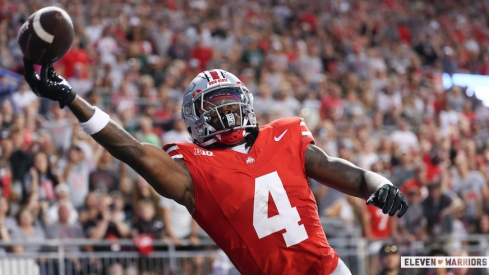Like a lot of you, I was enraptured by the run of the US Men's National Team in the World Cup. I don't follow MLS, but ever since catching "
La Guerra Fria" at Crew Stadium in February of 2001, I've been hooked on international soccer. As this weekend proved, pulling for the Yanks is quite different than being a Buckeye fan. Honestly, it's probably more akin to being a Texas Tech or Utah fan. But that's cool. It's an outlet for my awesome jingoism and the chance of my team sending an entire nation into a state of depression with an upset victory is too much to pass up
1.
Diehards refer to the sport as "The Beautiful Game" and at times that's true. There are many aspects to soccer that, if implemented in other, more mainstream American sports, would no doubt make them better. At the same time, there are things that likely drive the typical American fan nuts. Let's get those out of the way before getting into what I'd like to borrow from international soccer.
Stoppage Time: The whole notion of time in soccer runs counter to everything established in American sport. In basketball, we know how much time is needed to get a shot off from inbounds play at half court, and in football, there's a science to using timeouts to get the ball back late in games. Why is stoppage time in soccer so inexact? It's always "about three minutes" or "close to two minutes" -- an arbitrary block of time known by just one man, the referee. I'm fine with the running clock during corner kicks and throw-ins, but would it kill FIFA to stop the clock when a guy goes down with a phantom injury? While you're at it, you can kill the ridiculous stretchers that come out on to the field to scoop up the faux injured. On one hand, it's adorable and kind of quaint. On the other, it's really kind of not.
The Dives: As much excitement as the national team generated, the dives and fake injuries remain as the biggest barriers to more widespread acceptance here in the States. To be fair, the good guys (that's us) have grit and don't engage in this embarrassing play, but everyone else save for England and Germany, seem to be
more than up for it. I'm not sure what culture thought it would be a good idea to add this element to the sport (though mounting evidence points to Italy), but for a country that routinely sees football and hockey stars play through severe pain, it's hard to stomach. Unfortunately, it's something
we'll have to continue to live with until FIFA referees really begin to punish the floppers with yellow cards.
Video Replay: I don't want to frame this last complaint as America vs. YER-DOING-IT -WRONG, because Major League Baseball has
its own issues with making replay progress, but FIFA's stubborn refusal to allow instant replay in the World Cup is a tough pill to swallow. Especially
if you're British today. More disheartening is the fact that replay is nowhere on FIFA's radar. In 2005, Urs Linsi, general secretary of FIFA,
had the following to say:
Players, coaches and referees all make mistakes. It's part of the game. It's what I would call the "first match". What you see after the fact on video simply doesn't come into it; that's the "second match", if you like. Video evidence is useful for disciplinary sanctions, but that's all. As we've always emphasised at FIFA, football's human element must be retained. It mirrors life itself and we have to protect it.
On one hand, I get where Linsi is coming from. But on the other hand, there's simply too much at stake.
Now that we've covered some of the more frustrating elements to the sport, it's time to talk about aspects of soccer that could be borrowed to make college football better. Because that's what this is really all about, right?
Commercial-Free Telecasts: Obviously, this will never, ever fly (how then would Anheuser-Busch make America laugh), but how great was it to sit down to 45-50 minutes of uninterrupted action? This, to me, is soccer's single-greatest strength and if there's a way to make this work in football over here (there isn't), sign me up.
Colorful Commentary: Ian Darke's commentary should come with every sporting event. The fact that he was adamantly pro-American on ESPN's telecasts certainly helped, but quotes like the following kept me coming back for more:
"Bob Bradley's side will go to the biggest party they can think of. Mountainous drama. The contrast of emotions. That's the World Cup for you.."
Hockey had something similar with Emrick and Albert in the Winter Olympics: booth guys that clearly echo the drama and excitement unfolding in front of them, but we're stuck with Bob Griese making taco quips on Saturdays. College football does have its booth stars -- Tirico is terrific in any environment and Buckeye fans will tune into any game Chris Spielman is working -- but on the whole, we're getting shortchanged. While we're on the topic, I'd love to import some of the vernacular. When a receiver drops a wide-open pass in the endzone, that's a "howler" for sure.
Fandom: College football has one of the more passionate fanbases you'll find on the planet. Saying that, the American stadium experience, even at good ol' State U, is often a sterile one. Noisemakers, signs and flags are banned in most stadiums and if you haven't heard "Down in front!" at the Horseshoe, then you haven't been to a game. I'm not saying we have to take it to
this level, but a sign or flag here and there would be nice. And while I'm on the subject, can we please bring back the toilet paper rolls from the 80s?
What about you? Are there any aspects of international soccer you would like to see weaved into college football?





